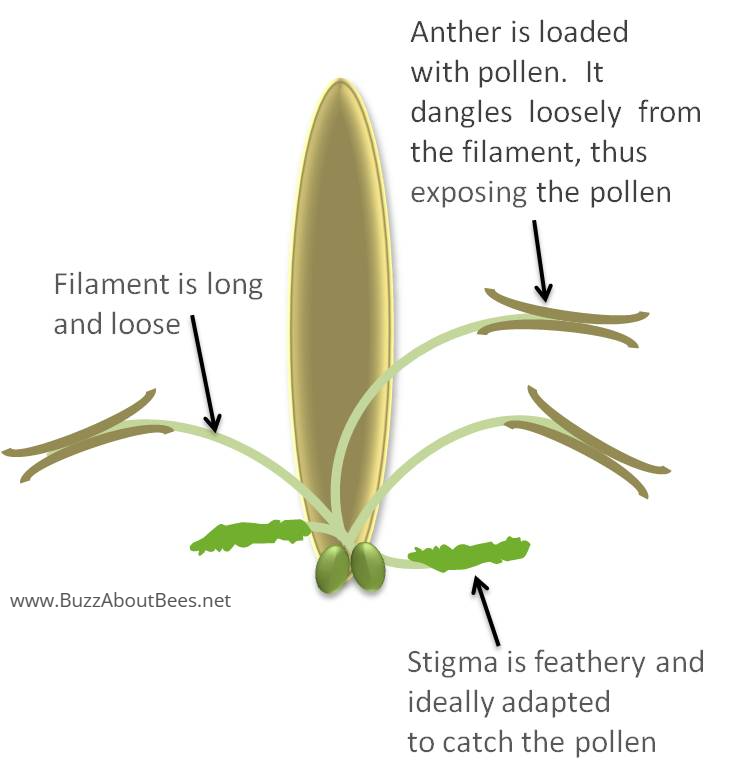Cross Pollination
Cross pollination (also called 'allogamy') requires the delivery of pollen from one plant to a separate individual plant.
This is in contrast to
'self pollination',
which requires only the transference of pollen from stamens to carpels
within the same flower (or to flowers on the same plant specimen).
Plants that reproduce through allogamy are usually reliant on wind or other moving creatures.
In such cases, they will have developed specific features to attract
insects, or in some cases, bats of birds (as with the humming bird –
known to pollinate flowers in some countries, whilst it feeds on
nectar).
In such cases, these plants are said to have developed ‘pollination syndromes’.
You can find more about how flowers attract pollinators (actually ‘vectors’)
on my link here.
Additionally, they may have developed features within themselves to further aid cross pollination.
For instance:
- Stamens carrying pollen are often prominent, to help ensure contact with the visiting vector.
- In the case of wind pollinated flowers, pollen is especially light,
so that it may easily be blown and carried to different plants.
- Some plants have evolved features which prevent self pollination. For
example, whilst many flowering plants have both male and female
reproductive parts within the same flower, or at least on the same plant
stem, others are entirely male, or entirely female.
The European Holly Ilex aquifolium, is a prime example, where male and female plants are grown within a close proximity to each other in order to ensure fertilization that will produce berries in the winter. - In some
plants, the carpels and stamens of the same flower will mature at
different times, again to prevent self pollination.
For example, the pollen may mature before the stigma is chemically receptive to being pollinated.
In other plants, the stigma can chemically detect whether or not the pollen has come from the same, or a different plant, and prevents self pollination from occurring.
For a variety of reasons, humans may proactively cross pollinate plants via artificial means, for example, by hand, as a means of cultivating new varieties of plants.
Read more about plant pollination, including different types of pollination (such as wind and insect).
If you found this page helpful or interesting, I'd really be grateful if you would share it with others - if not this page, perhaps another, such as Gardening For Bees.
Thank you so much :) .


